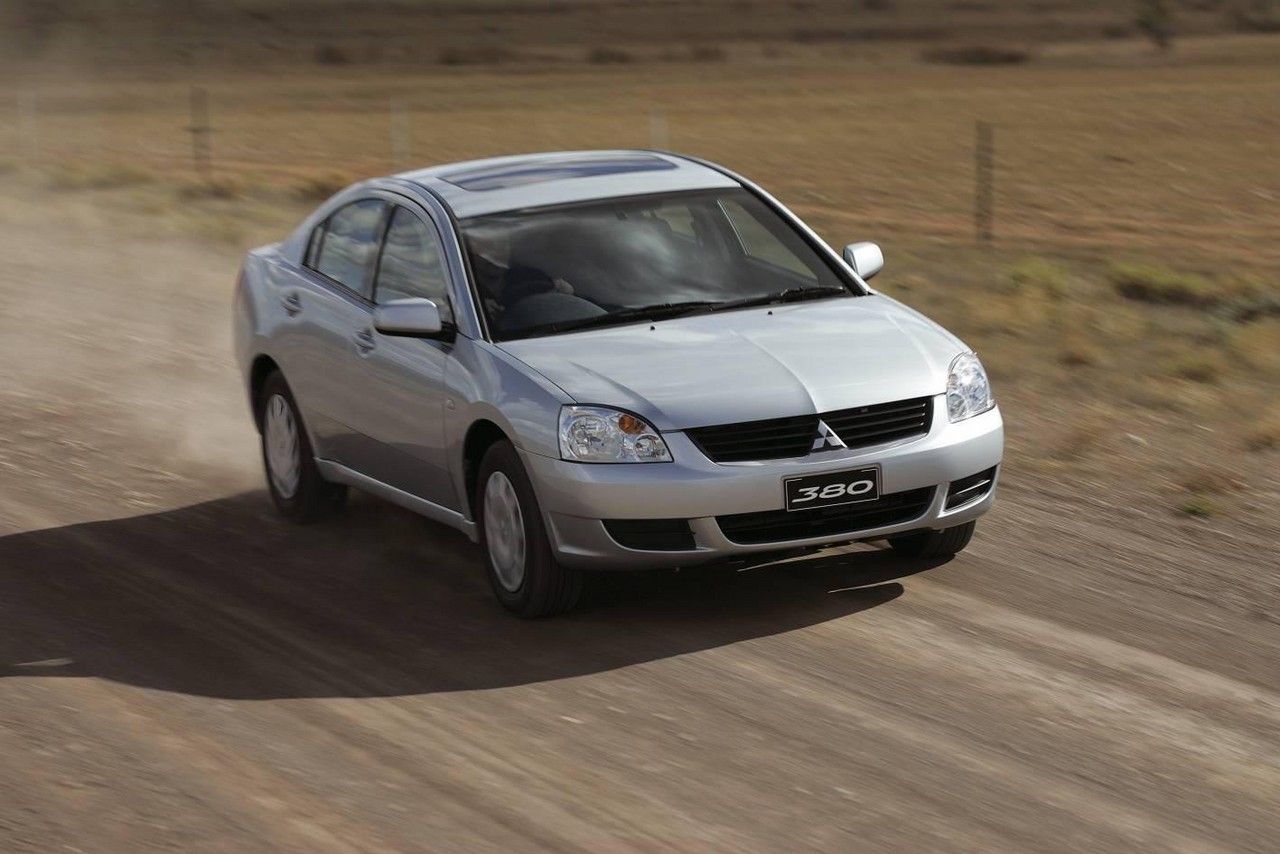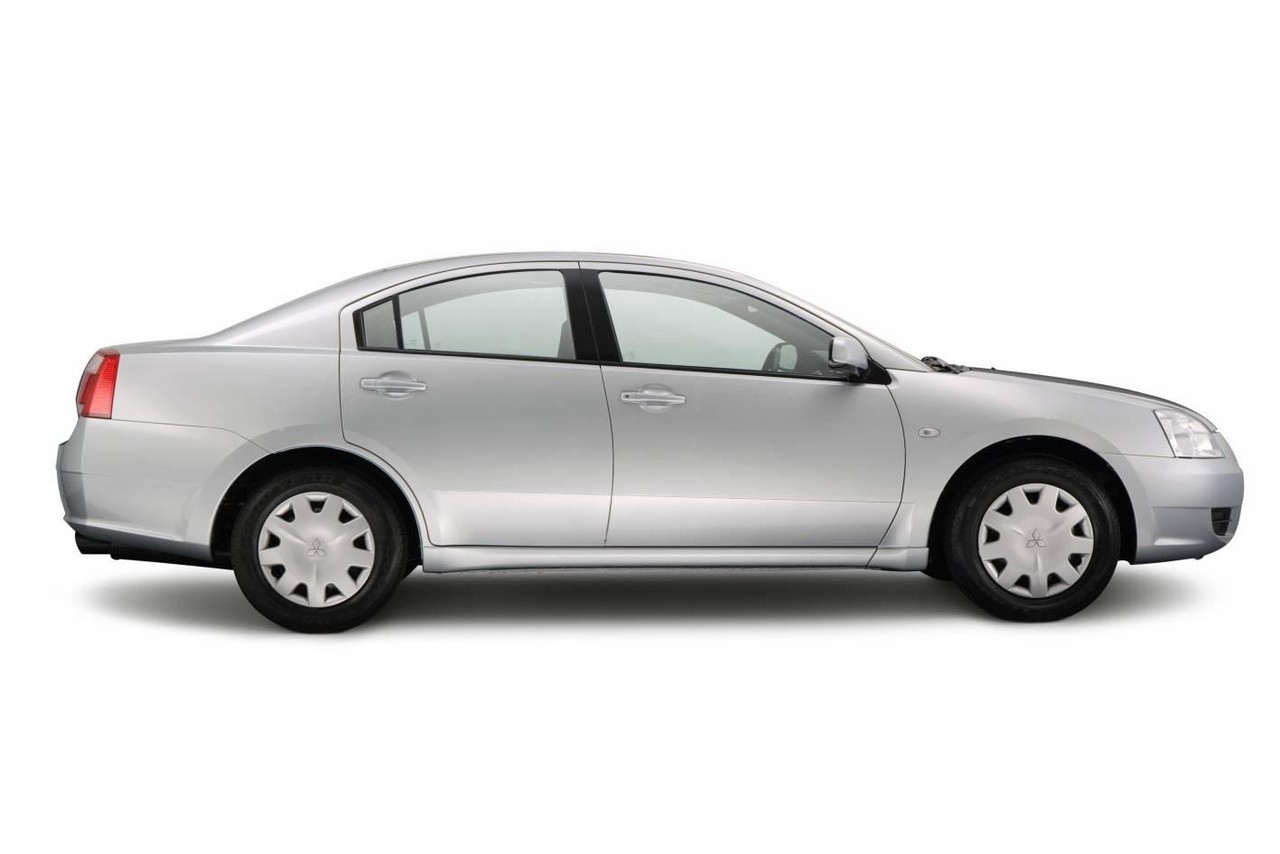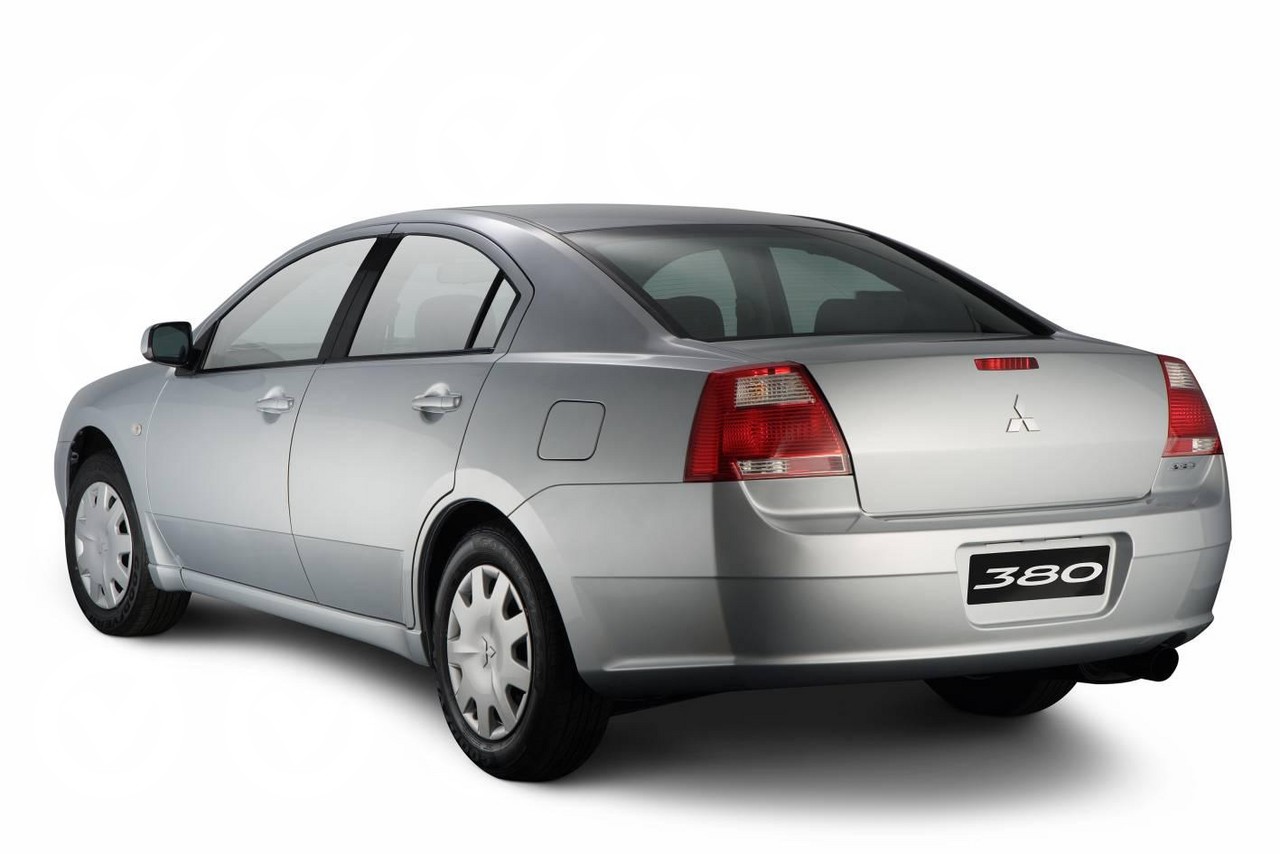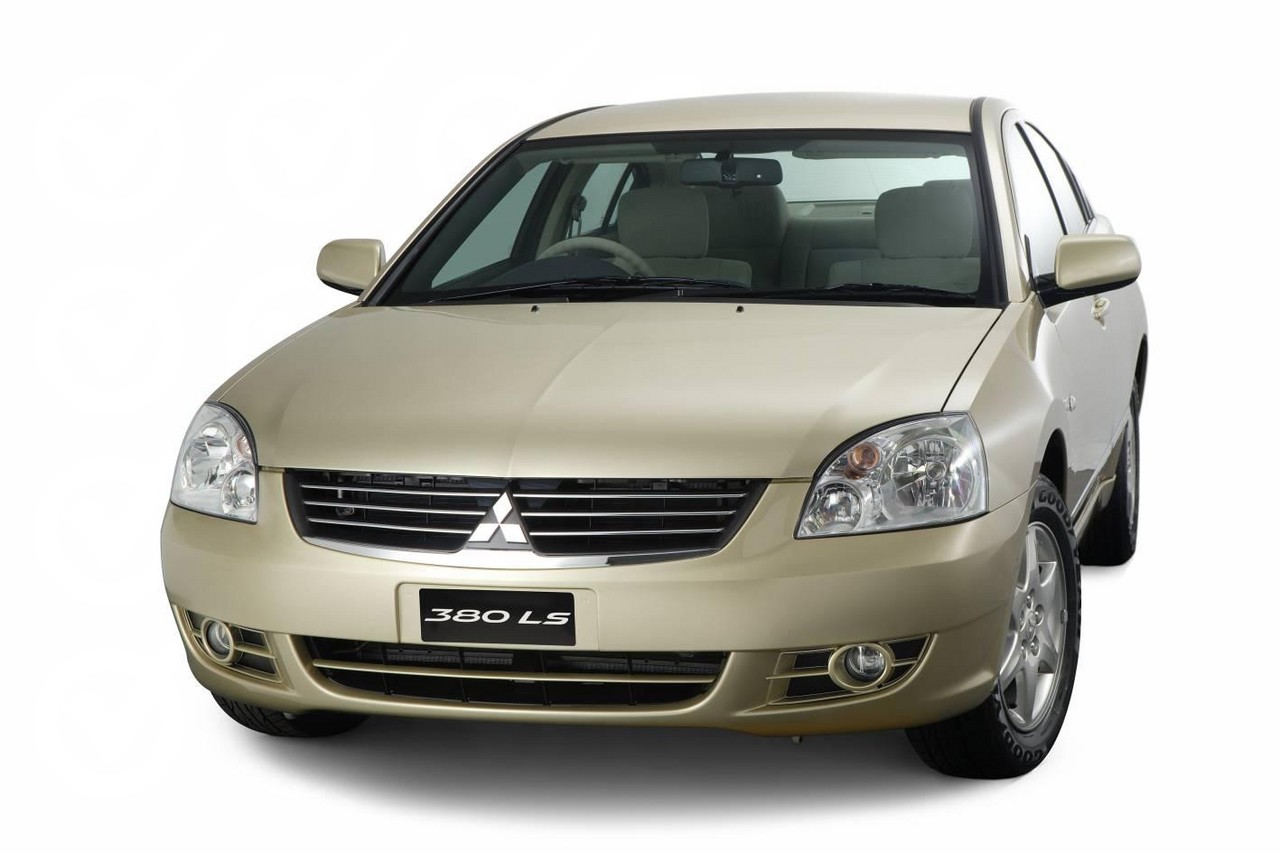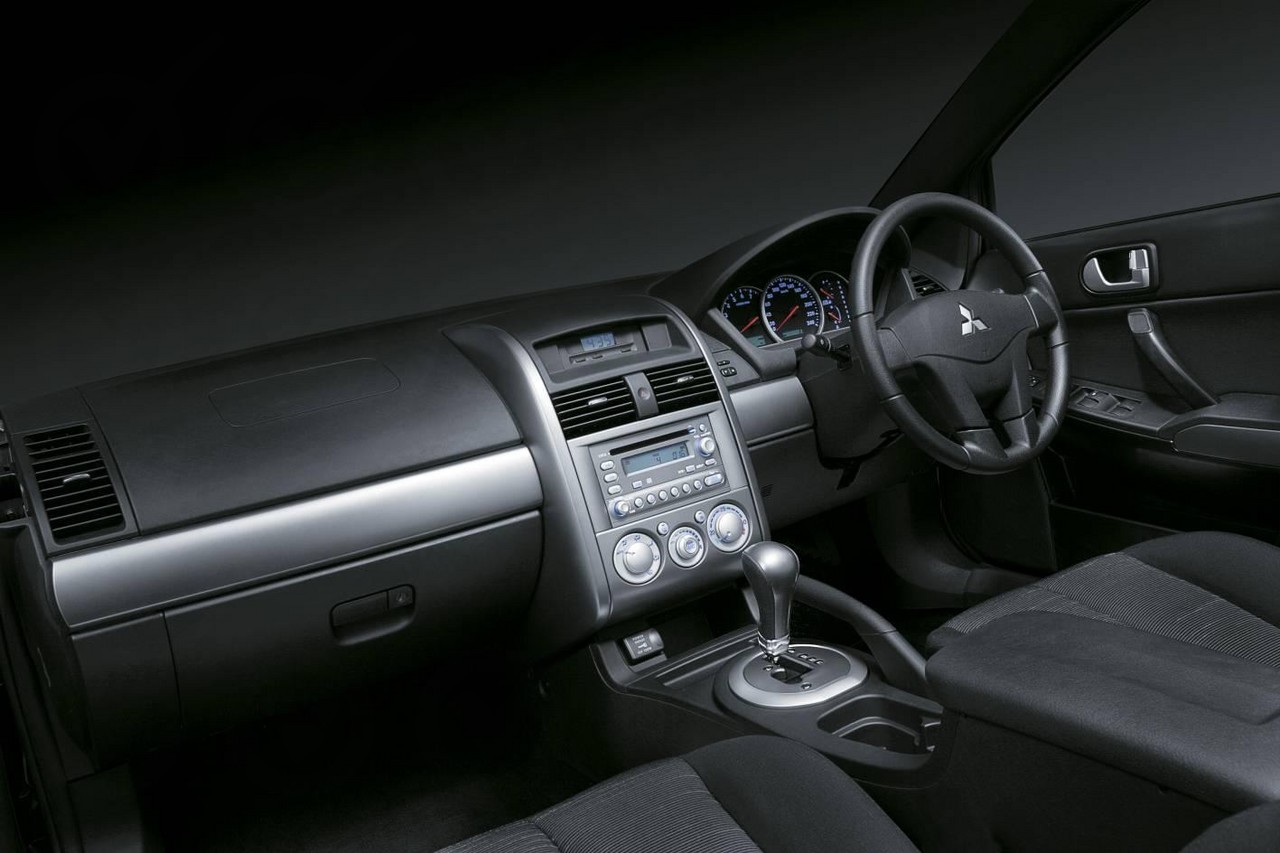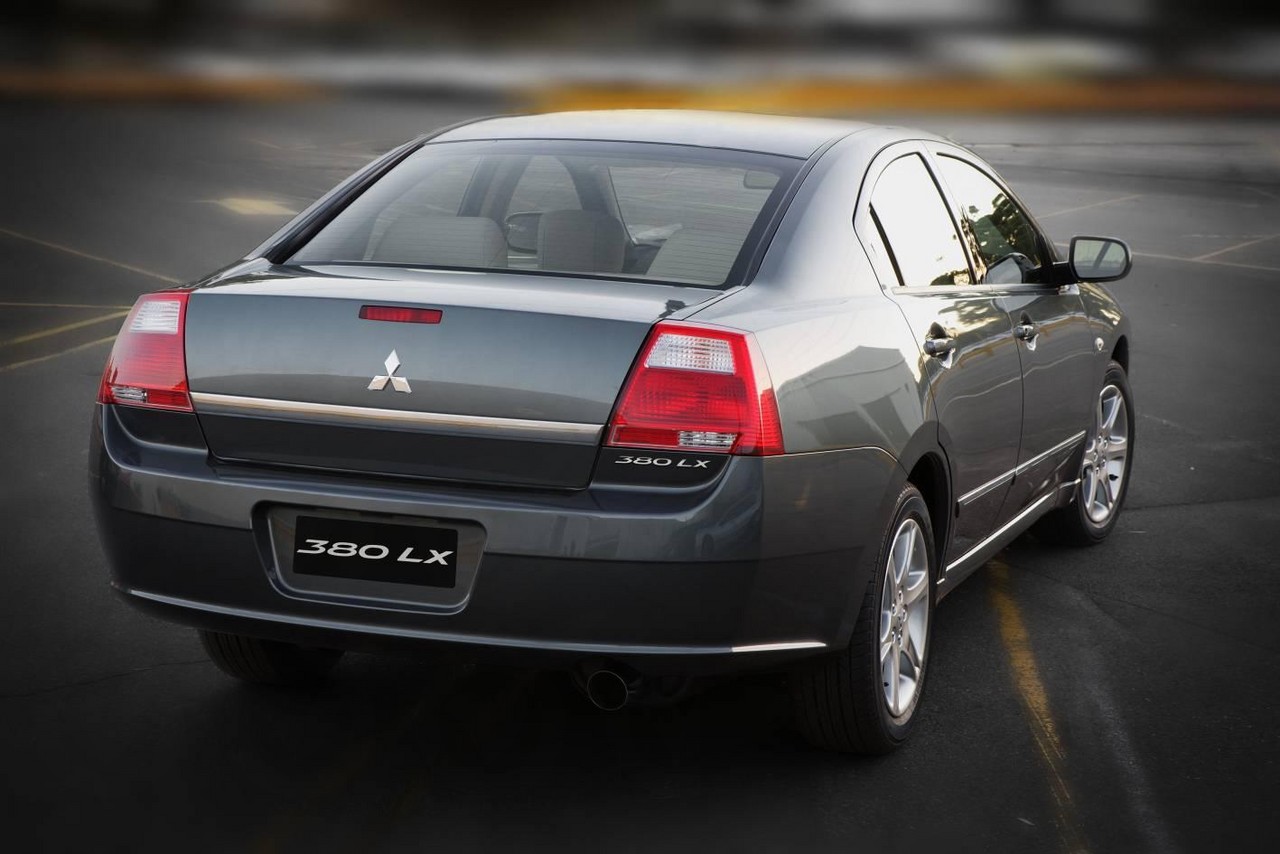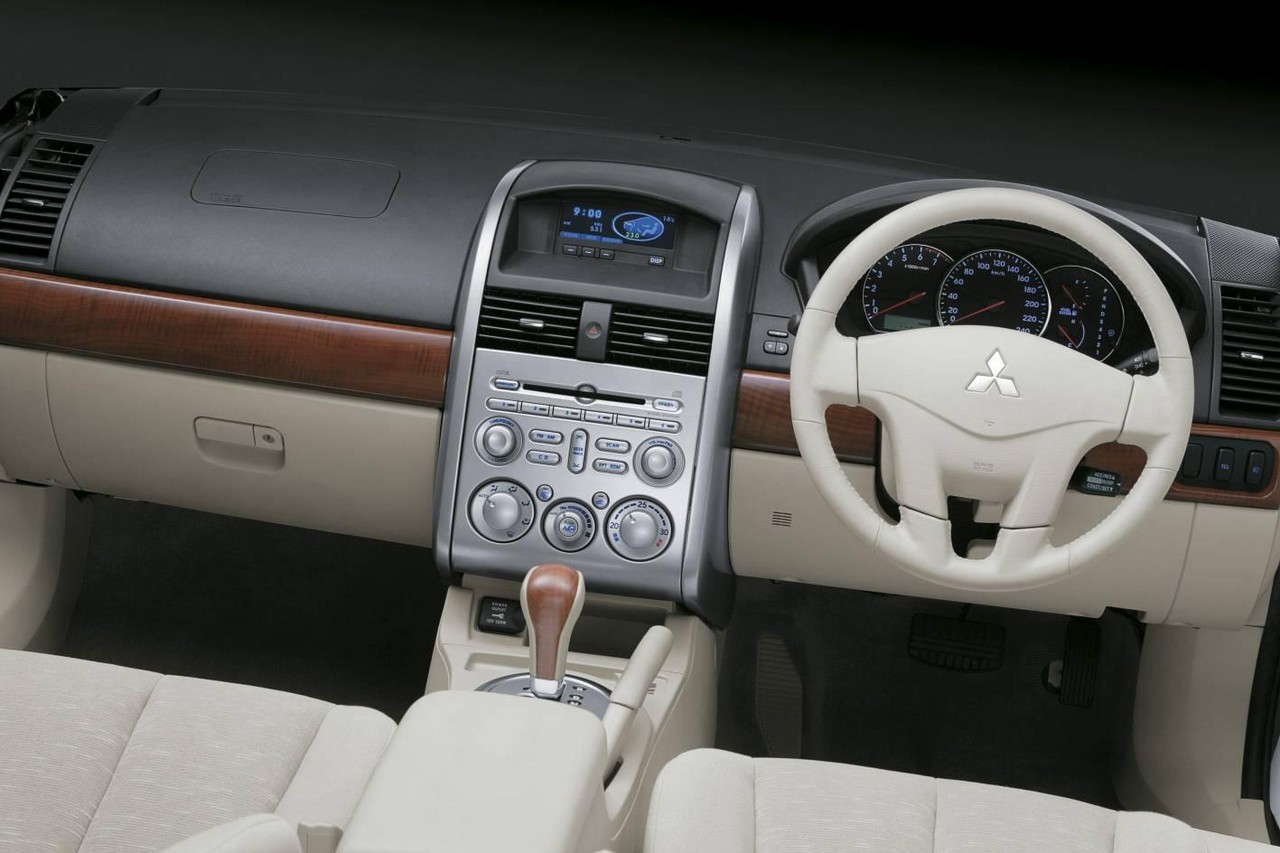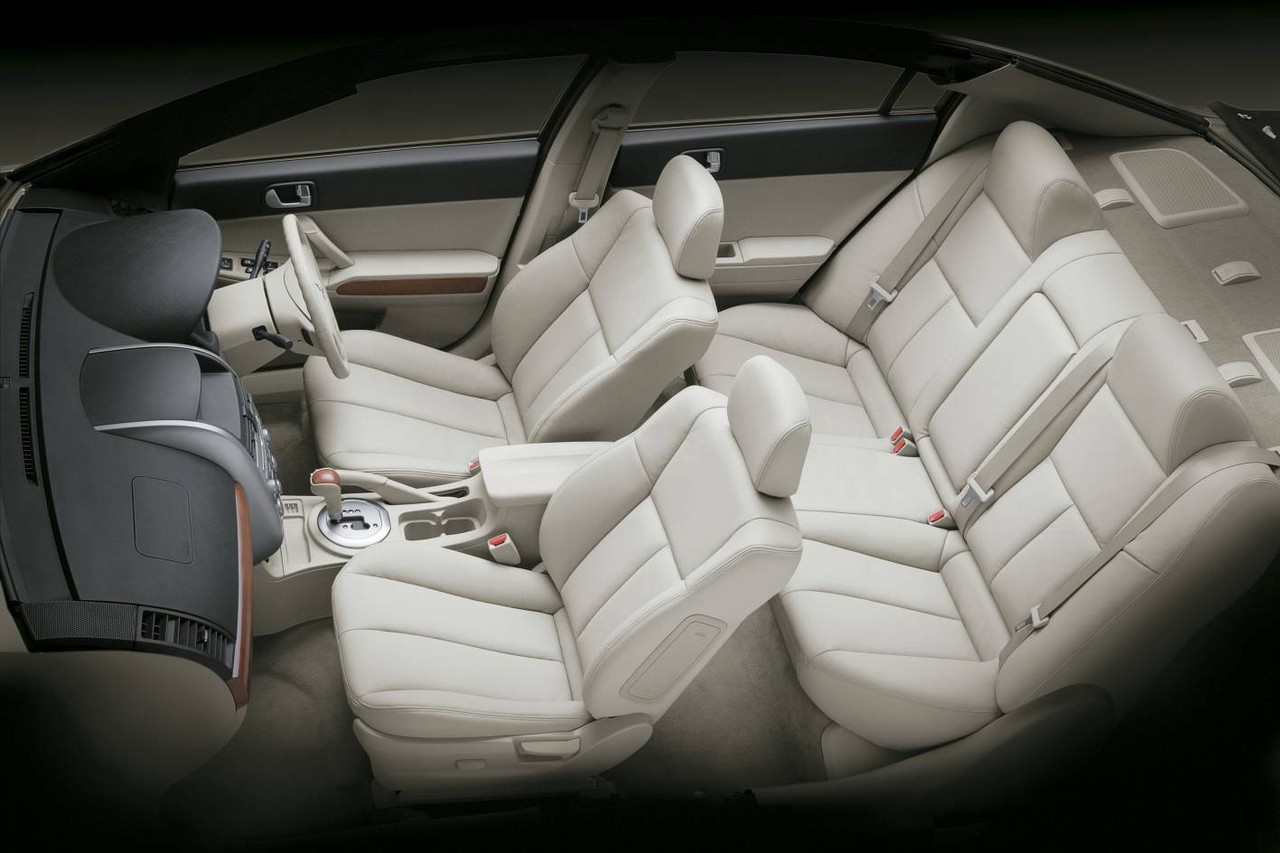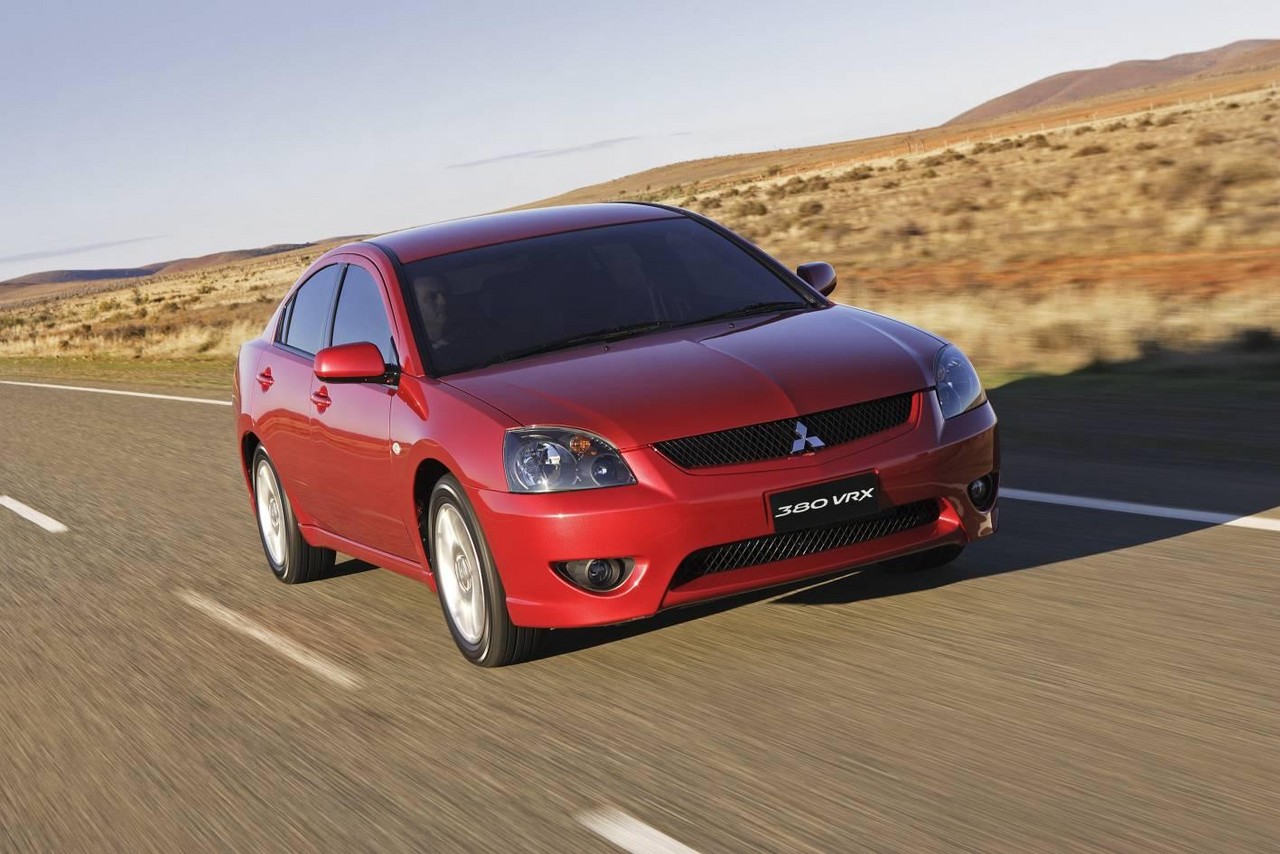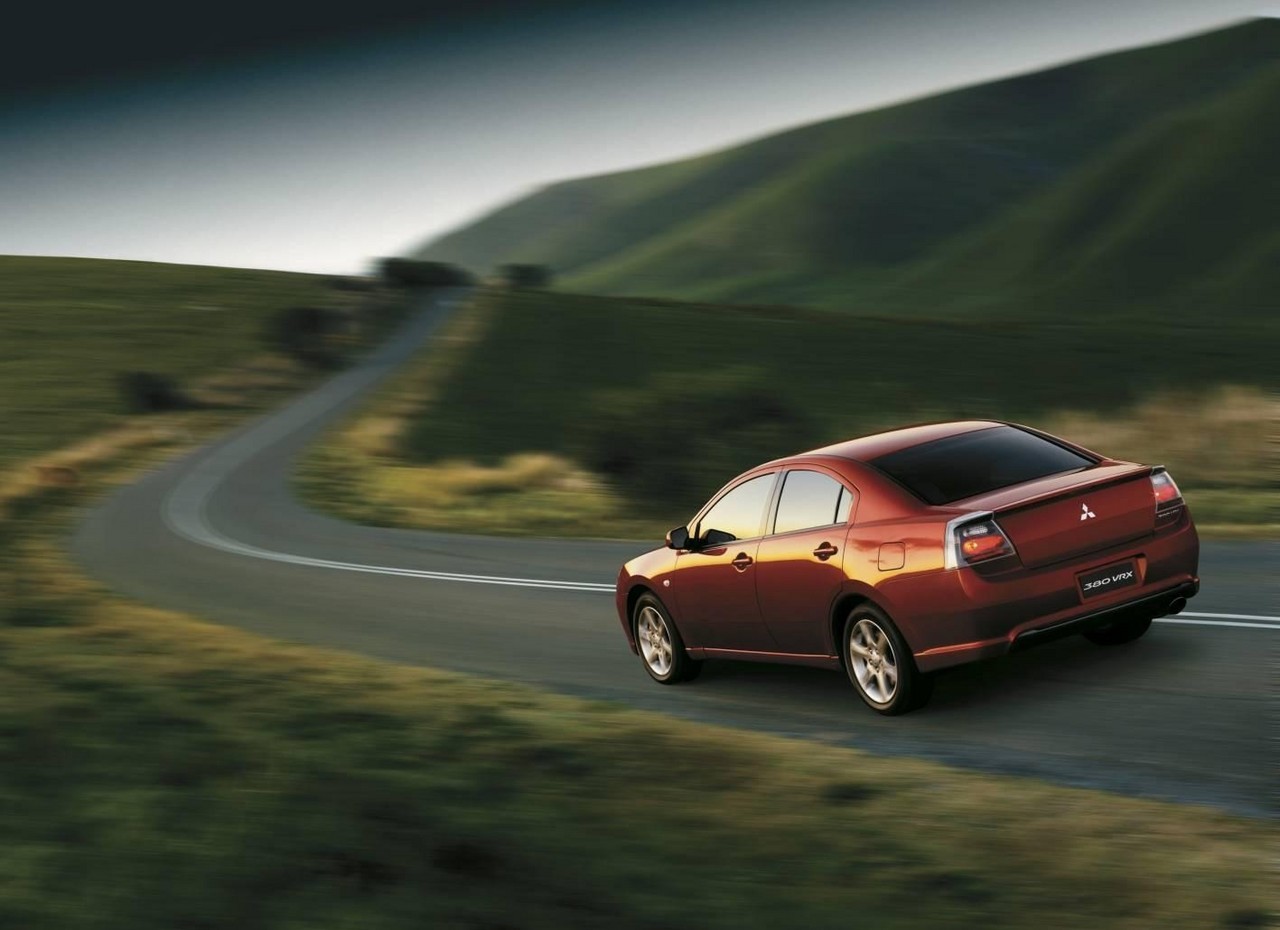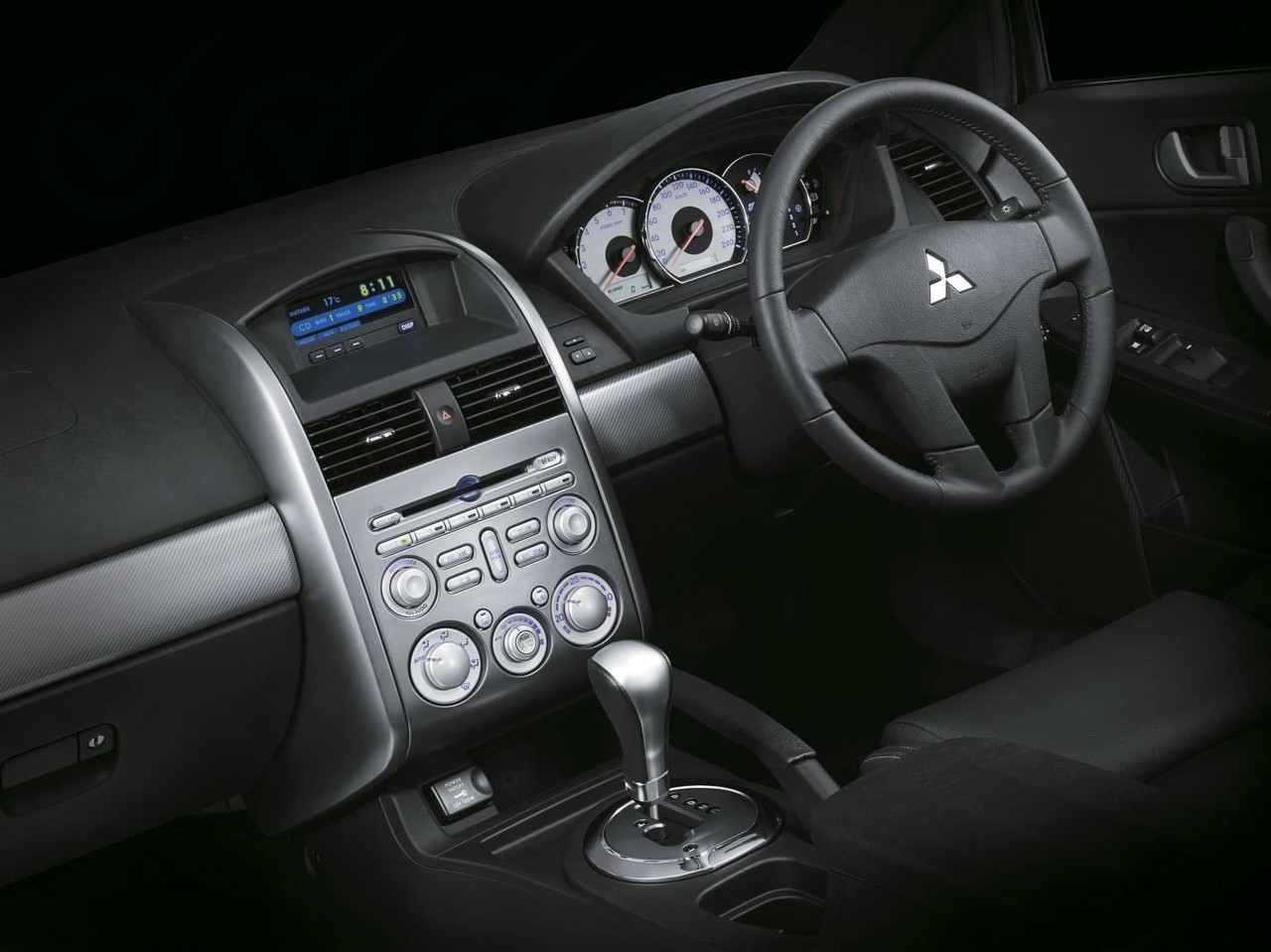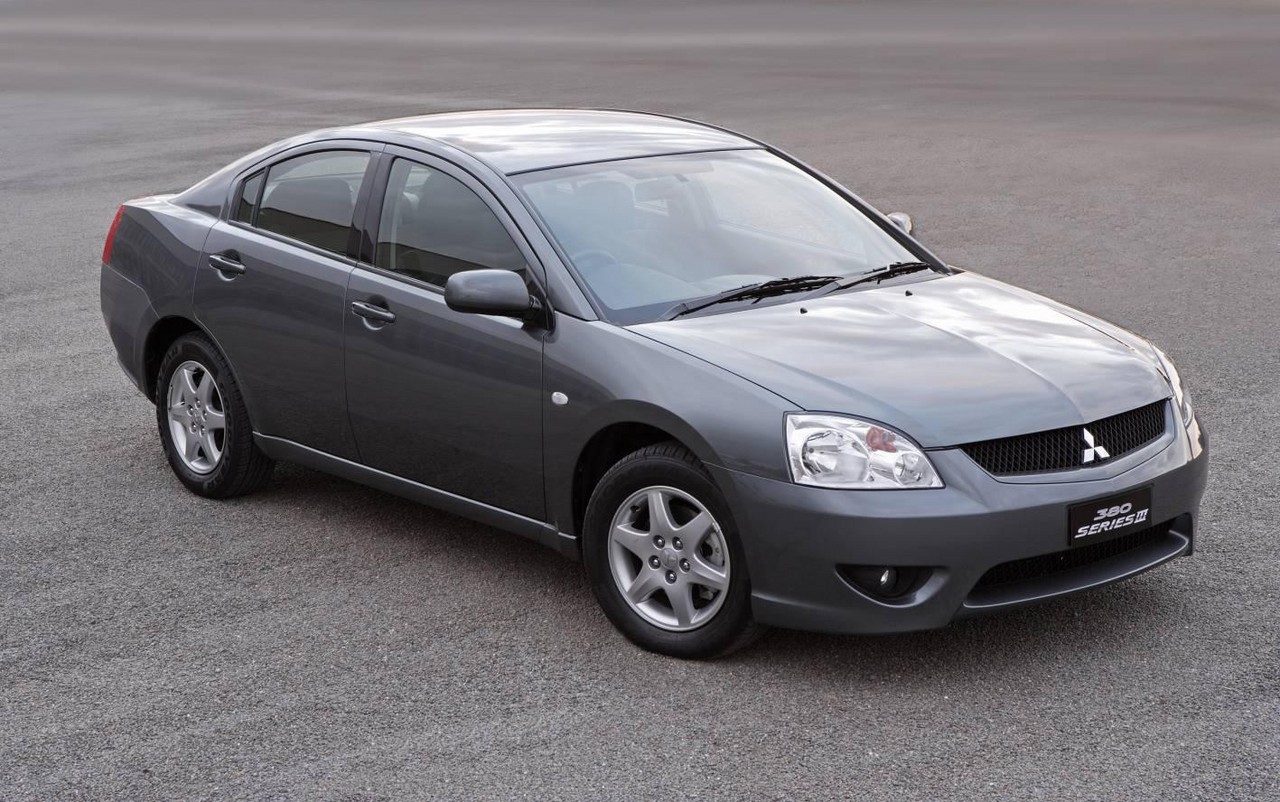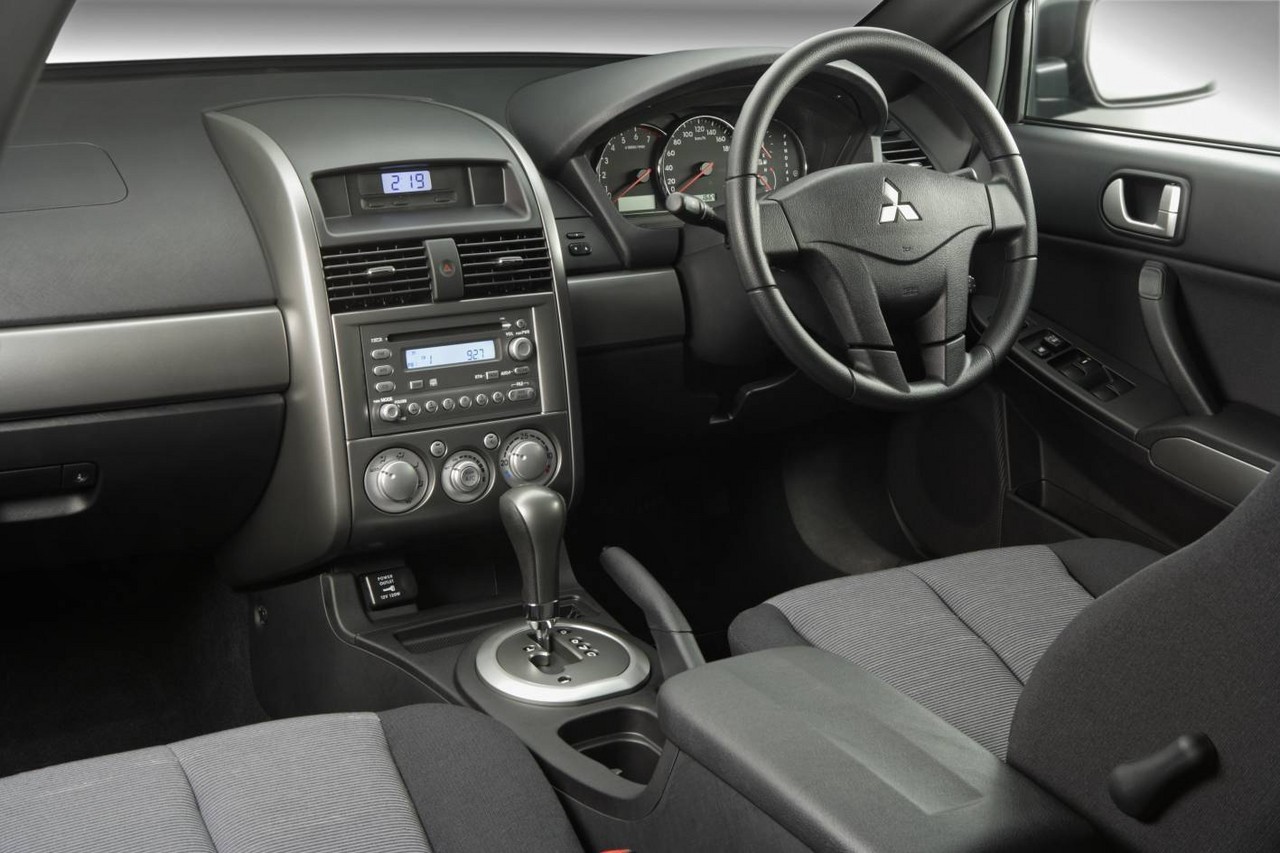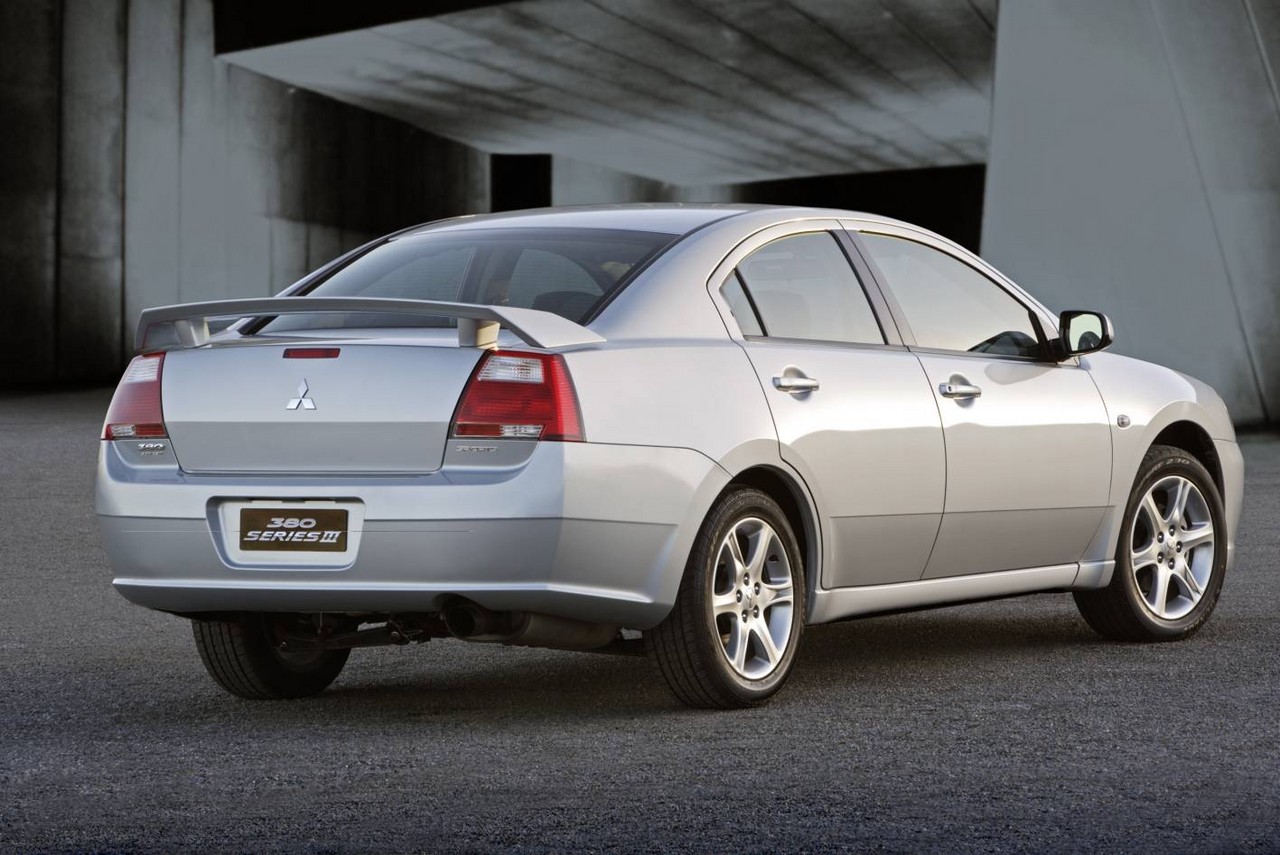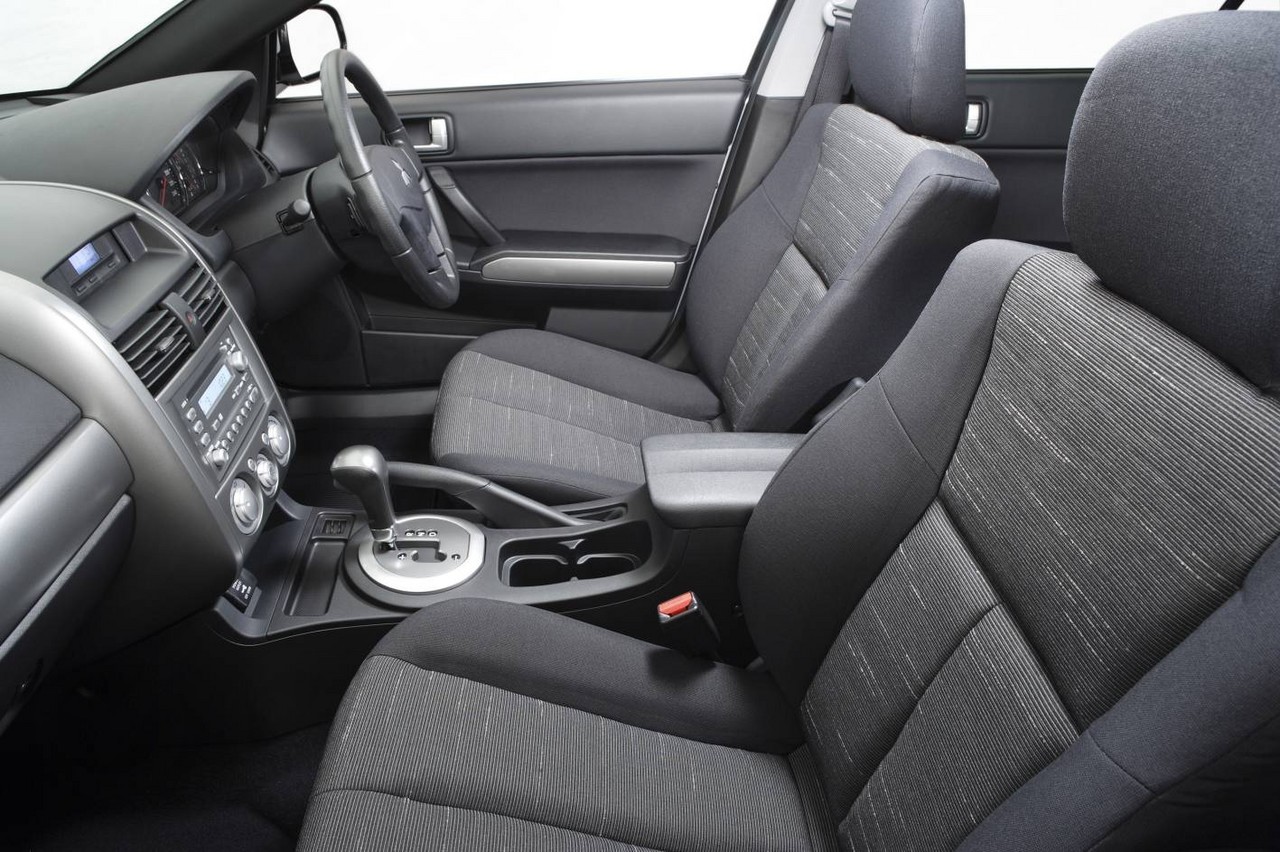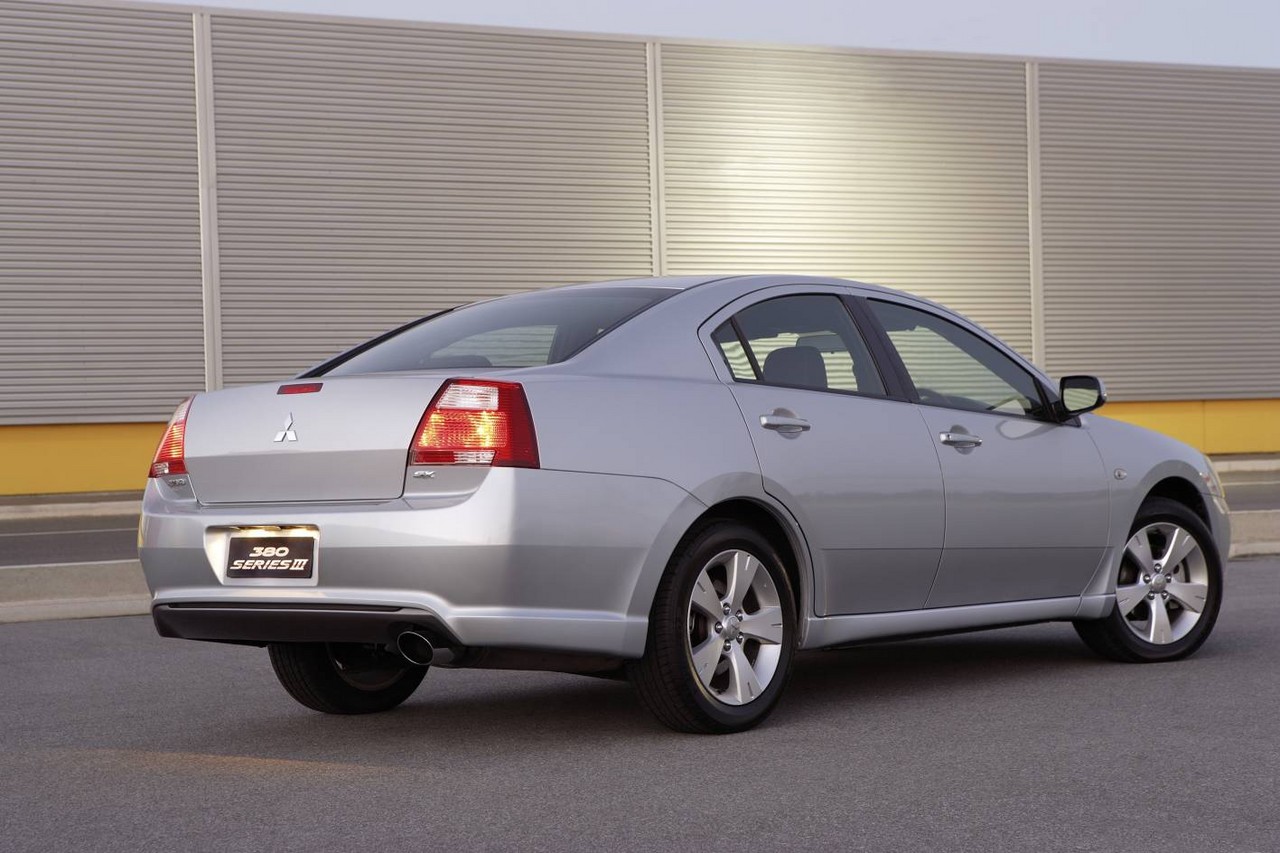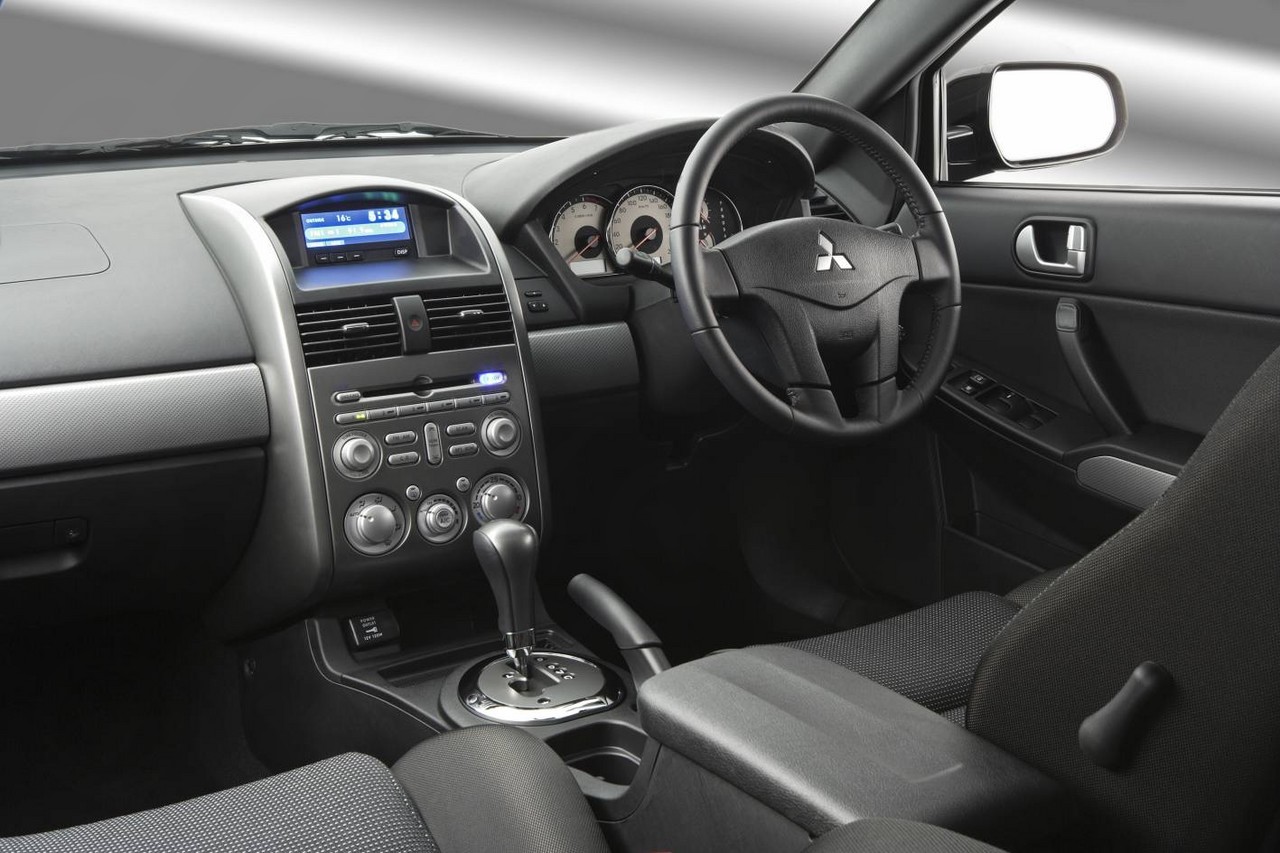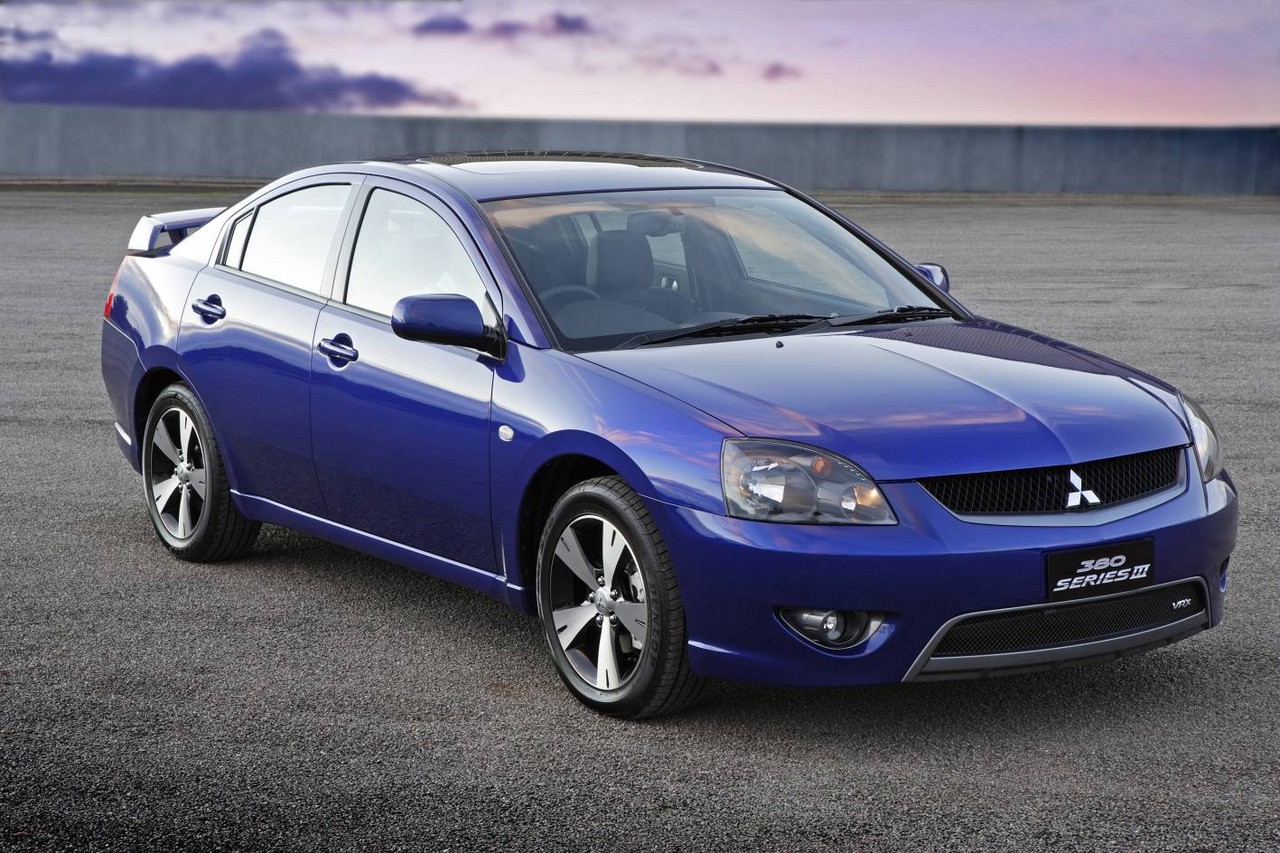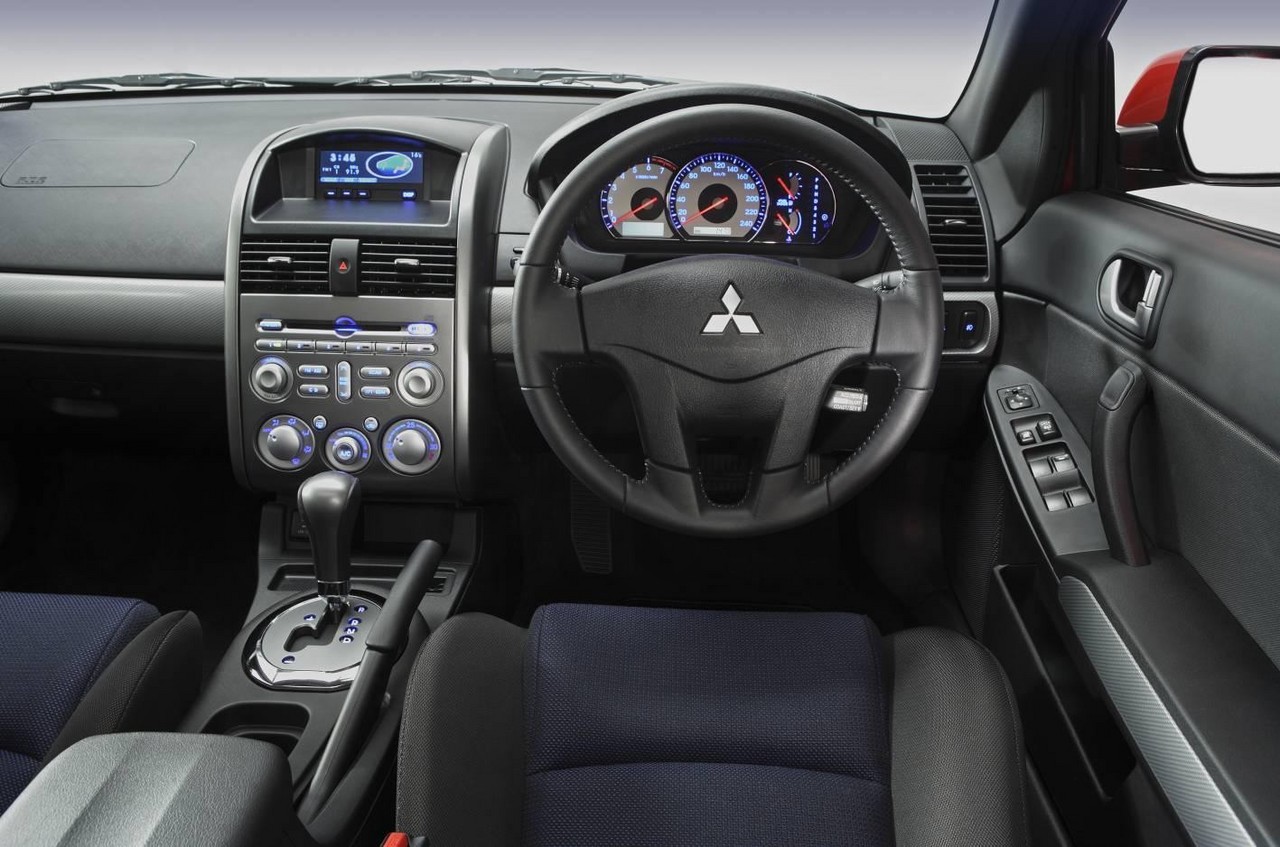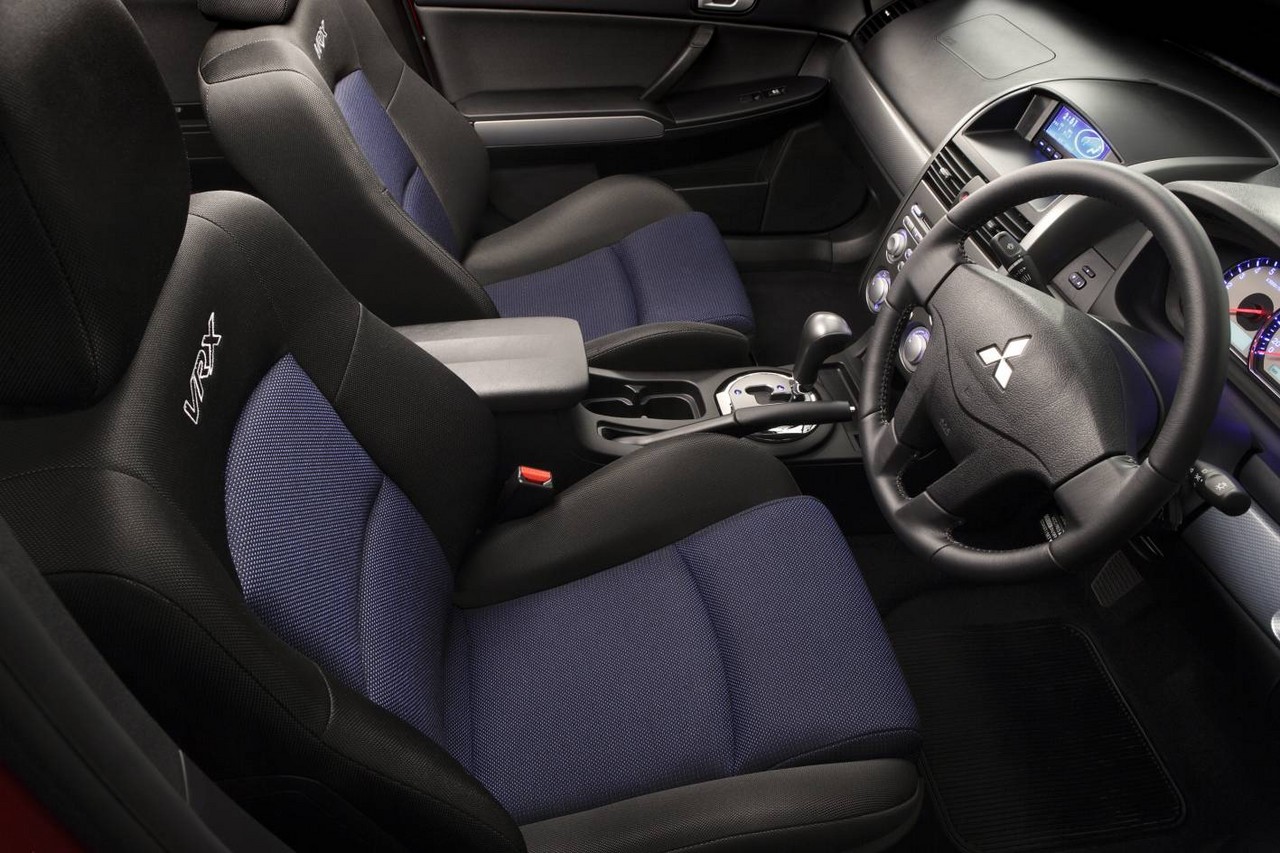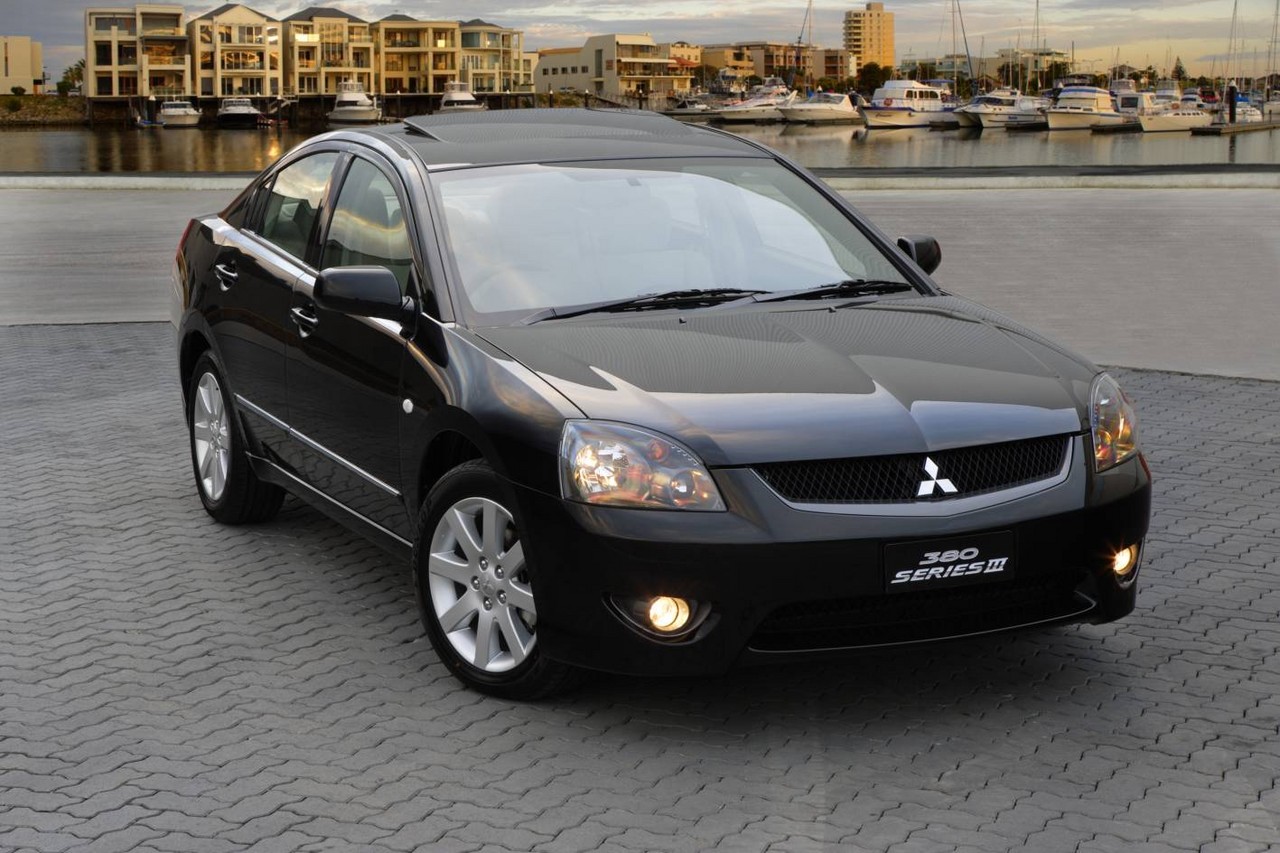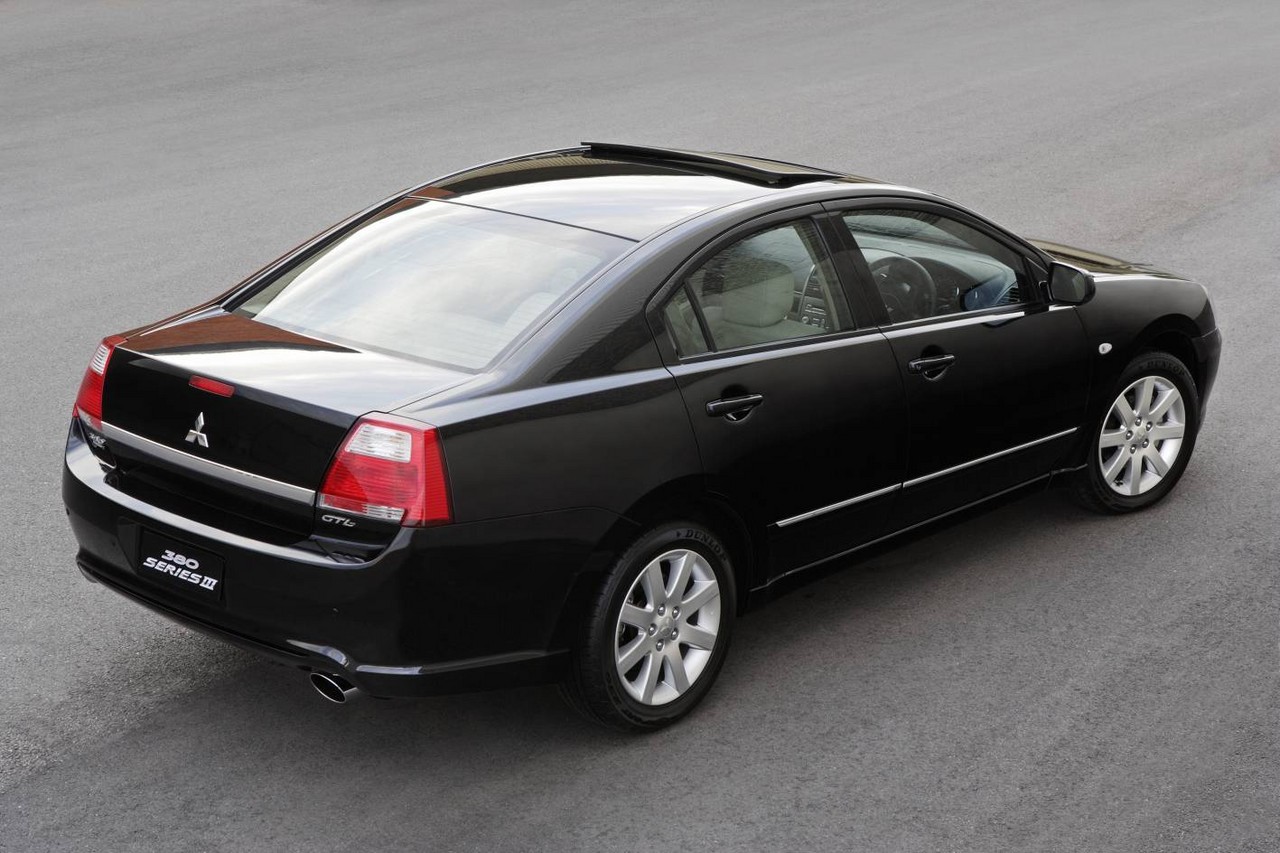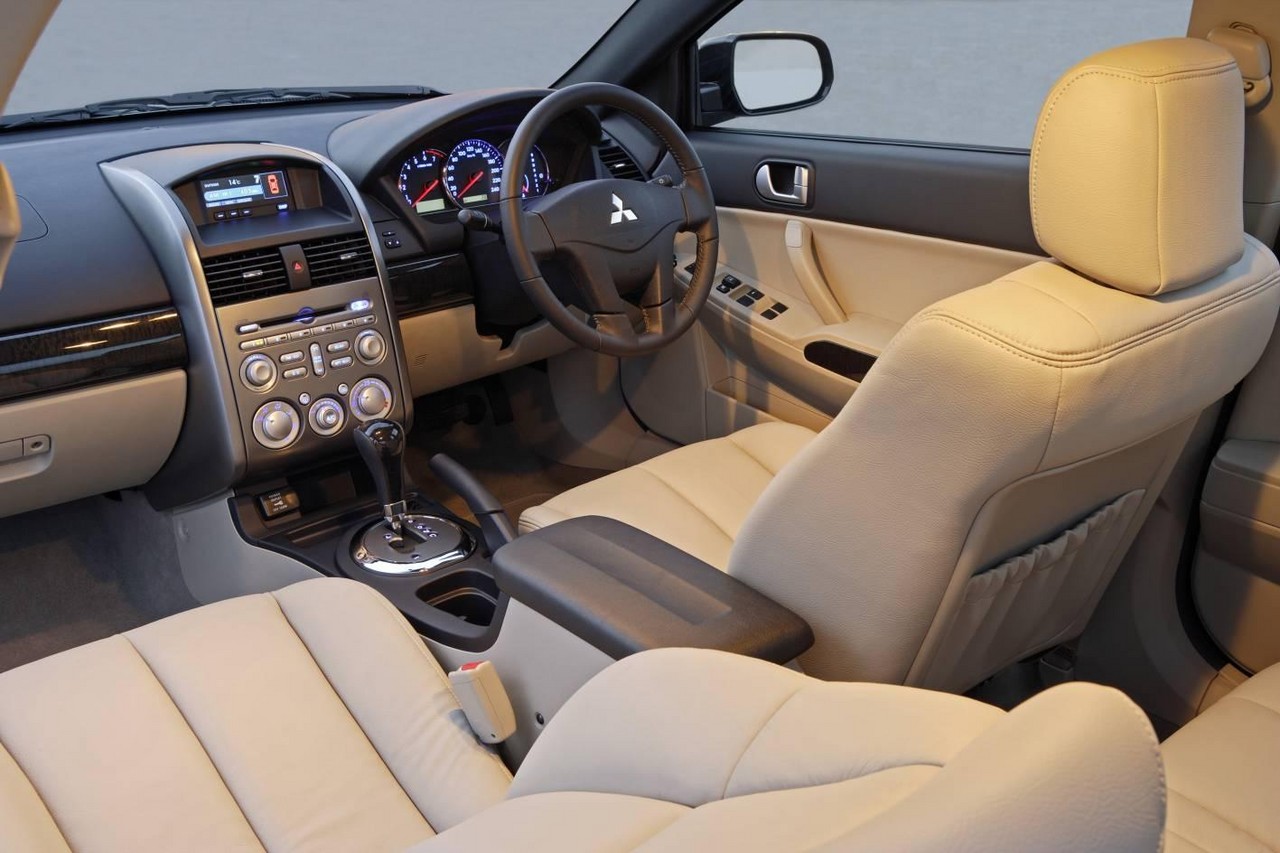
- Responsive 3.8-litre V6 engine
- Refined five-speed automatic ransmission
- Excellent ride/handling balance
- Spacious and comfortable interior
- Quiet, well-insulated cabin
- Steering is accurate…
- … but offers limited feel
- Steering wheel kickback over uneven surfaces
- No curtain airbags or ESC
- Hard interior plastics
- Small boot opening and rear seat doesn’t fold
Review: Mitsubishi DB.I 380 (2005-06)
Overview
Released in September 2005, the Mitsubishi DB Series I (DB.I) 380 was a large, front-wheel drive sedan. Manufactured in Clovelly Park, Adelaide, the 380 was powered by a 3.8-litre V6 petrol engine – with a single overhead camshaft – that was mated to either a five-speed manual or automatic transmission, the latter with ‘Smart Logic’ and a sequential shift function. The 380 range consisted on an unnamed entry-level variant, the premium LS and LX, the sporty VRX and range-topping GT.
The 380 was based on the ninth generation Mitsubishi Galant which was designed in the United States. As a result of its $600 million investment program, however, the 380 had a more rigid body, stiffer rear side members for greater towing capacity and a revised rear floorpan for its full-size spare wheel. Maximum towing capacity for the Mitsubishi 380 was 570 kg unbraked and 1600 kg braked.
6G75 engine
The 3.8-litre 6G75 V6 petrol engine had a cast iron block, a single overhead camshaft, four valves per cylinder and a compression ratio of 10.0:1. A development of the 3.5-litre engine used in the TW Magna, changes included a new block, crankshaft, rods, pistons, heads and increased compression ratio (previously 9.0:1)
Dimensions and suspension
Compared to its TW Magna predecessor, the 380 was 23 mm shorter (at 4837 mm), but 55 mm wider (1840 mm), 45 mm taller (1480 mm) and had a 28 mm longer wheelbase (2750 mm). The 380 had MacPherson strut front suspension (with lower A-arms, coil springs and an anti-sway bar) and multi-link rear suspension (with upper and lower control arms, telescopic shock absorbers and an anti-sway bar).
| Variant | Engine | Trans. | Peak power | Peak torque |
|---|---|---|---|---|
| [Unnamed], Limited Edition, VRX |
3.8-litre petrol V6 | 5sp man., 5sp auto |
175 kW at 5250 rpm | 343 Nm at 4000 rpm |
| LS, LX, GT |
3.8-litre petrol V6 | 5sp auto | 175 kW at 5250 rpm | 343 Nm at 4000 rpm |
Safety equipment
Standard safety equipment for the Mitsubishi 380 included dual front airbags, front side airbags, ABS, electronic brake force distribution and front seatbelts with pretensioners and load limiters; the LS, VRX, LX and GT were also fitted with traction control.
Brakes
The Mitsubishi 380 had 294 mm by 28 mm ventilated front brake discs with two piston calipers and 302 mm by 18 mm ventilated rear discs with single piston calipers.
ANCAP crash testing
In ANCAP crash testing, the 380 received a four star adult occupant protection rating with a score of 28.09 out of 37. In the offset crash test, protection from serious chest and leg injury was marginal for the driver. In the side impact, there was a slight risk of serious abdomen injury for the driver.
Features: 380, LS, VRX, LX and GT
Standard features on the entry-level 380 included 16-inch steel wheels, a six speaker sound system with CD player and MP3 compatibility, climate control air conditioning, a four-way power adjustable driver’s seat (with adjustable lumbar support), cruise control, remote central locking, power windows and mirrors, a height adjustable steering wheel, ten-function trip computer and an immobiliser.
The 380 LS was further equipped with 16-inch six-spoke alloy wheels, an eight speaker sound system with six-stack CD player, a six-way power adjustable driver’s seat, 4.9-inch TFT screen, front fog lamps and a leather-wrapped steering wheel and gearshift. Compared to the LS, the VRX was differentiated by its 17-inch six-spoke alloy wheels and sports suspension.
The 380 LX added leather seats, a ten-way power adjustable driver’s seat with memory settings, a six-way power adjustable passenger’s seat and a power sunroof. The range-topping GT was distinguished by its 17-inch eight-spoke alloy wheels, black leather seats, Bluetooth connectivity and rear parking sensors.
2006 Mitsubishi 380 Limited Edition
In February 2006, a Limited Edition variant was released. Based on the entry-level 380, the Limited Edition added 16-inch alloy wheels, Bluetooth connectivity, rear parking sensors, front fog lamps and a rear spoiler.
Related links
Review: Mitsubishi DB.II 380 (2006-07)
Overview
Released in April 2006, the Mitsubishi DB Series II (DB.II) 380 introduced a revised range as the entry-level variant was renamed the ES and the LS was replaced by the SX; retail prices were also reduced in an attempt to increase sales.
| Variant | Engine | Trans. | Peak power | Peak torque |
|---|---|---|---|---|
| ES, SX, Platinum Edition, VRX |
3.8-litre petrol V6 | 5sp man., 5sp auto |
175 kW at 5250 rpm | 343 Nm at 4000 rpm |
| LX, GT |
3.8-litre petrol V6 | 5sp auto | 175 kW at 5250 rpm | 343 Nm at 4000 rpm |
Features
Compared to its DB.I predecessor, standard features for the DB.II 380 variants were substantially the same. The SX, however, had a sportier emphasis than its LS predecessor.
2006 Mitsubishi 380 Platinum Edition
In October 2006, a limited-run Platinum Edition was released. Based on the SX, the Platinum Edition added a sunroof, rear parking sensors, Bluetooth connectivity, a second 12-volt power outlet and a rear spoiler.
Review: Mitsubishi DB.III 380 (2007-08)
Overview
Released in July 2007, the DB Series III (DB.III) 380 introduced a revised range and factory-fitted dual fuel LPG system (with the cylinder located in the boot). Visually, the DB.III 380 could be identified by its new bumper and grille for ES variants, while the VRX received a five-spoke alloy wheels, embossed seats, four-spoke steering wheel, front and rear bumper inserts and a bootlid-mounted spoiler.
| Variant | Engine | Trans. | Peak power | Peak torque |
|---|---|---|---|---|
| ES, Platinum Edition, VRX |
3.8-litre petrol V6 | 5sp man., 5sp auto |
175 kW at 5250 rpm | 343 Nm at 4000 rpm |
| SX, GT, GTL |
3.8-litre petrol V6 | 5sp auto | 175 kW at 5250 rpm | 343 Nm at 4000 rpm |
Safety equipment
Compared to its DB.II predecessor, standard safety equipment for the DB.III 380 was extended to include traction control.
Features
Standard features for the DB.III 380 were extended to include alloy wheels and front fog lights. Compared to the standard ES, the ES Sports edition added 17-inch alloy wheels with sports suspension, Bluetooth connectivity, sunroof and rear spoiler.
Based on the GT, the newly introduced GTL variant had less of a sporting emphasis and was distinguished by its ‘stone’ leather interior, sunroof, silver painted wheels and chrome rear finishing strips.
2007 Mitsubishi 380 VRX Fusion Burst
A limited-run ‘Fusion Burst’ edition of the VRX was released in July 2007 to coincide with the release of the DB.III 380. Compared to the standard VRX, the VRX Fusion Burst was differentiated by its orange paint colour, colour-coordinated seats and sunroof.
Brochure
Related links
